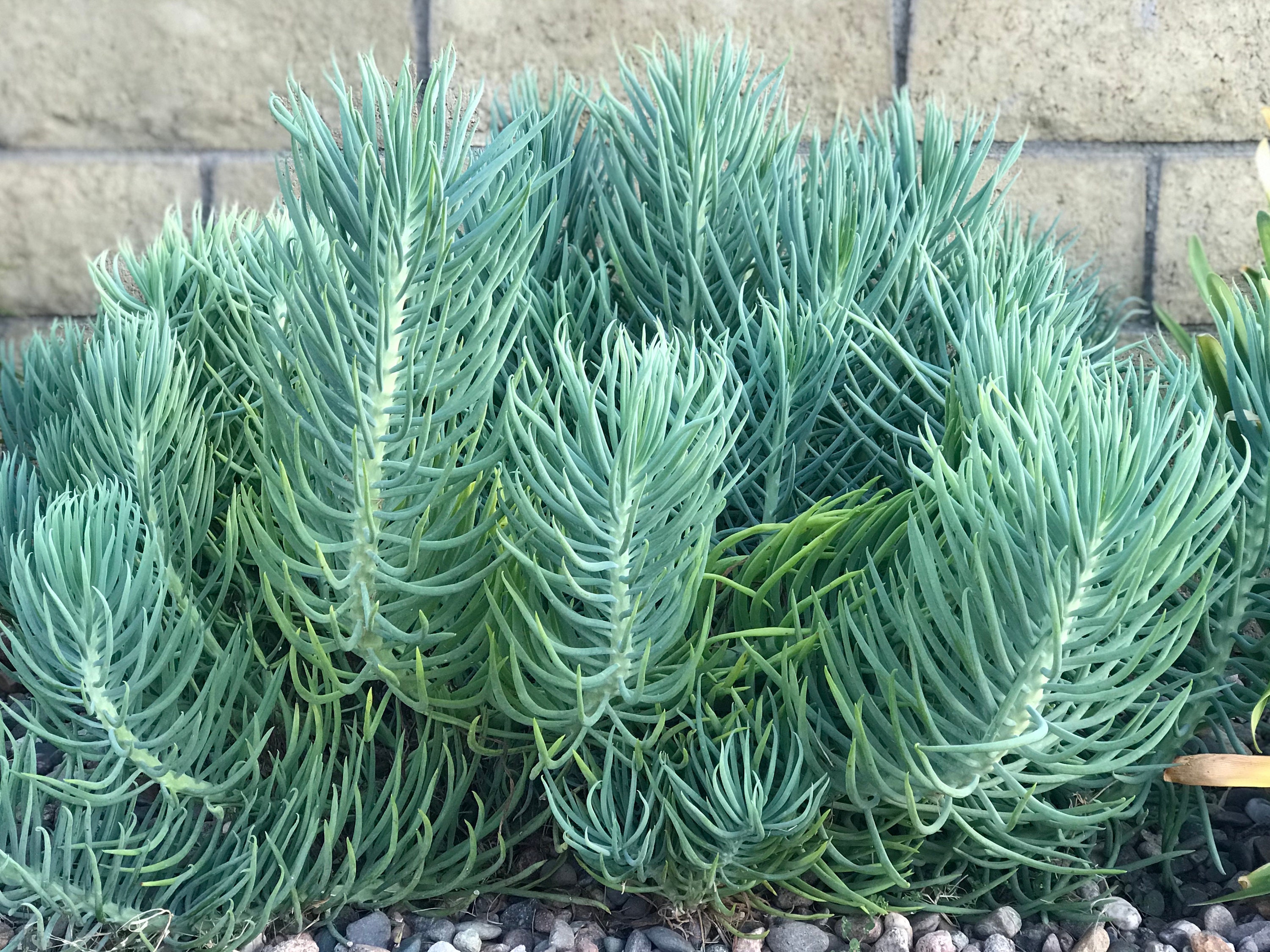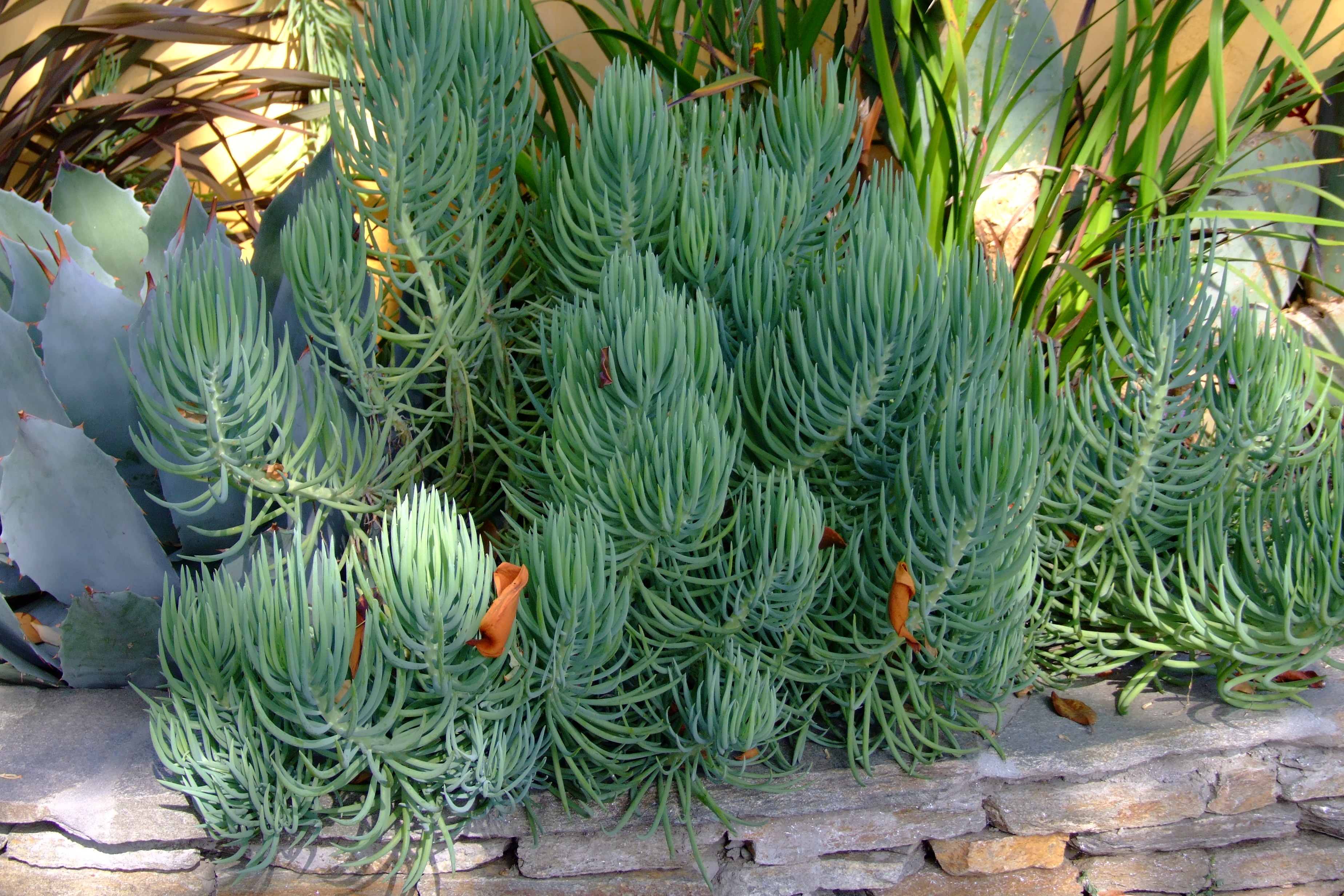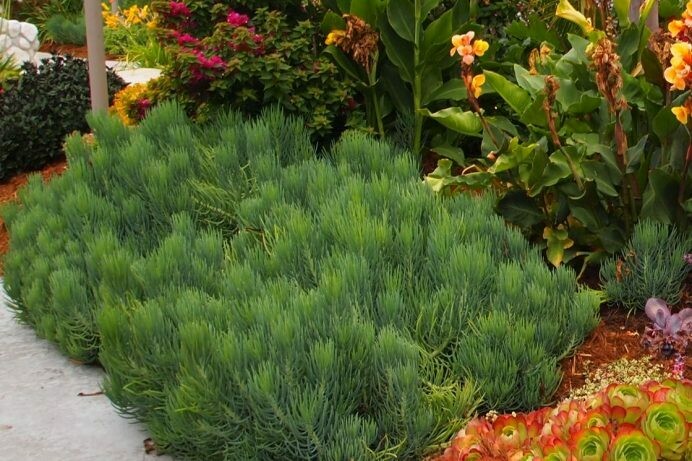This succulent, which has a blue-green hue, works great for container gardens. It can grow tall and provide visual interest and texture to your garden designs. It propagates quickly, so you should be aware of where you’re putting it if growing outdoors. In the springtime, you may notice white flowers blooming.
Table of Contents
Care and Propagation Information
Senecio vitalis “Narrow-Leaf Chalksticks” is an ideal choice for container gardening, due to it being deer-proof and perfect as a low-ground cover. Plant it outdoors with caution, as it can spread at a rapid rate and be labeled as a weed by some.
Watering
Senecio vitalis “Narrow-Leaf Chalksticks” should be watered according to the “soak and dry” method, where the soil is allowed to dry out completely between waterings. This is the typical watering method for a succulent.
Be sure to get a hold of our FREE watering guide so you can discover the signs of overwatering your succulents and how to bring them back to life if necessary.
Where to Plant
If you live in a place with temperatures below 30° F (-1.1° C), it’s recommended to grow “Narrow-Leaf Chalksticks” in a pot that can be easily brought indoors. This succulent does best when provided with 6 hours of full sunlight each day.
How to Propagate Senecio vitalis “Narrow-Leaf Chalksticks”
Senecio vitalis “Narrow-Leaf Chalksticks” is a plant that reproduces quickly and can be propagated easily through stem cuttings.
Remember that Senecio vitalis can be poisonous. Exercise caution when dealing with this succulent.
Wearing nitrile-dipped gloves, use a sharp knife to cut a stem close to the base of the plant to propagate it.
Wait for several days for the bottom of the stem to form a callus before planting it in soil that drains well.
Commonly Mistaken For
Care and Propagation Information
General Care for Senecio vitalis “Narrow-Leaf Chalksticks”
Senecio vitalis “Narrow-Leaf Chalksticks” is an ideal choice for container gardening, due to it being deer-proof and perfect as a low-ground cover. Plant it outdoors with caution, as it can spread at a rapid rate and be labeled as a weed by some.
Watering
Senecio vitalis “Narrow-Leaf Chalksticks” should be watered according to the “soak and dry” method, where the soil is allowed to dry out completely between waterings. This is the typical watering method for a succulent.
Be sure to get a hold of our FREE watering guide so you can discover the signs of overwatering your succulents and how to bring them back to life if necessary.
Where to Plant
If you live in a place with temperatures below 30° F (-1.1° C), it’s recommended to grow “Narrow-Leaf Chalksticks” in a pot that can be easily brought indoors. This succulent does best when provided with 6 hours of full sunlight each day.
How to Propagate Senecio vitalis “Narrow-Leaf Chalksticks”
Senecio vitalis “Narrow-Leaf Chalksticks” is a plant that reproduces quickly and can be propagated easily through stem cuttings.
Remember that Senecio vitalis can be poisonous. Exercise caution when dealing with this succulent.
Wearing nitrile-dipped gloves, use a sharp knife to cut a stem close to the base of the plant to propagate it.
Wait for several days for the bottom of the stem to form a callus before planting it in soil that drains well.
Commonly Mistaken For
Senecio serpens “Blue Chalksticks” is a low-growing, shrubby evergreen succulent with finger-like stems that have a powdery blue-green hue.
FAQ
How do you take care of Senecio vitalis?
Senecio vitalis “Narrow-Leaf Chalk Sticks” should be watered according to the typical requirements for succulents. The best approach is to use the “soak and dry” method, making sure to let the soil dry out completely in between waterings.
Is Senecio vitalis sun or shade?
Hardiness Zones 10–11
How often to water Senecio vitalis?
How often should I water Senecio?
Every week to two weeks
Does Senecio need full sun?
Put your Senecio in an area that gets lots of bright, indirect light or direct sunlight. If you put it in a spot with only medium or low light, its health will deteriorate.



